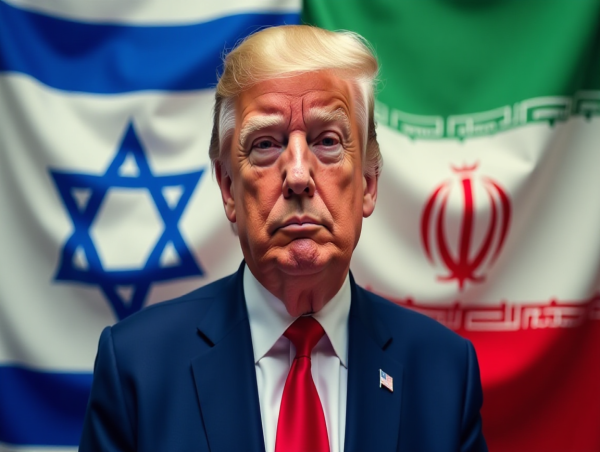The war between Israel and Iran lasted just under two weeks. Then, without warning, US President Donald Trump got on social media and said it was over. He called it a “Complete and Total Ceasefire.”
The missiles stopped flying, for now.
But the truth is that there’s no signed agreement. No official statements from Iran or Israel. No roadmap for what happens next. Trump says the war is over “forever.”
Iran says it’s waiting to see if Israel really stops. And while the US claims a diplomatic win, the battlefield is still hot.
This story is about diplomacy, credibility, and how fast modern wars can now start and stop. It’s also a glimpse into how international power is being reshuffled in real time.
How did we even get here so fast?
Just over a week ago, Israel escalated airstrikes deep into Iranian territory, targeting military and nuclear sites.
In response, Iran fired long-range missiles at Israeli cities, killing civilians and damaging infrastructure.
Then, over the weekend, the US entered the fight. Trump ordered over 125 American warplanes to strike three Iranian nuclear facilities.
Iran hit back with missiles aimed at a US airbase in Qatar, but none caused casualties.
According to Trump, the Iranians gave early warning to Qatar so the US could prepare. Iran’s foreign ministry later called the strike symbolic. No Americans were hurt.
Then came the surprise: on Monday night, Trump declared that Iran and Israel had agreed to stop fighting. He said he brokered the deal himself, working through Vice President JD Vance, Secretary of State Marco Rubio, and Qatari leaders.

Iran would stop firing for 12 hours, followed by Israel for the next 12. That was the plan.
The problem however, is that Iran never confirmed it agreed to this. Foreign Minister Abbas Araghchi said there was no deal; only a willingness to pause retaliation if Israel stopped first.
As Iran has repeatedly made clear: Israel launched war on Iran, not the other way around. As of now, there is NO “agreement” on any ceasefire or cessation of military operations. However, provided that the Israeli regime stops its illegal aggression against the Iranian people no
And Israel didn’t make a public statement at all. Still, after a brutal final round of strikes, the violence paused. So, was Trump bluffing? Or did it work?
Who gained what and who took the hit?
For Trump, the optics are a win. He looks like a leader who can start and end a war in under two weeks, without American casualties.
The timing helps his campaign. The war stops before it drags the US into a broader conflict, and he gets to call it a “peace deal.” His team even branded it “The 12-Day War.”
For Iran, the picture is more complex. Its nuclear program took a hit. Civilian casualties were high, with over 400 dead and 3,000 injured, according to Iranian officials.
But its leadership avoided a wider war that could have collapsed its economy or triggered regime instability. Iran retaliated just enough to save face, then pulled back.
Israel got to test its long-range capabilities deep inside Iranian territory and may have inflicted lasting damage.
But the cost was also high. Iranian missile strikes reached Beersheba, killing civilians and exposing the limits of Israel’s air defense. Some Israeli ministers openly called for regime change in Tehran, which further complicated diplomacy.
Qatar, however, emerged as the biggest diplomatic winner. The Gulf nation hosted the US base Iran targeted and played go-between for Trump’s ceasefire push.
It’s now the quiet broker of Middle Eastern diplomacy, expanding its soft power far beyond gas exports.
Oil markets delivered the clearest verdict: the threat of escalation was real, and its sudden removal erased nearly all of the risk premium. Brent crude and WTI both plunged over 7%, and early trading the next day saw further losses of nearly 3–5%.
This price reset benefits energy importers like India, Japan, and the eurozone, all of which were exposed to last week’s price spike. But it also exposes how easily geopolitical shocks can swing commodity markets, especially when US involvement is unpredictable.
Is the ceasefire holding or just a pause?
Right now, there’s no active fighting. That alone is significant. But without a formal agreement, verification, or guarantees, it’s not technically a ceasefire but a mutual timeout.
Iran has stated publicly that it won’t continue attacks if Israel stops first. But it hasn’t signed anything.
Israel hasn’t confirmed anything either. The US took the lead in framing the ceasefire, but that framing depends on all sides wanting to avoid the next step.
In a phone interview with NBC News, President Donald Trump declared the ceasefire between Israel and Iran would be permanent, saying:
“I don’t believe they will ever be shooting at each other again.”
American diplomat Dennis Ross said:
For now, I think this is going to hold, and I think you will have an end to the war, Iran has no interest in resuming anything soon.
This is a fragile arrangement. It worked because both sides hit a limit. Iran didn’t want more economic damage.
Israel achieved key targets. Trump got the headlines. But nothing fundamental has changed.
Iran’s nuclear program is wounded, not gone. Israel still sees Iran as an existential threat. And Iran’s military still has a long-range missile arsenal ready.
The three scenarios ahead
The first option is a long quiet period. Iran regroups, Israel pulls back, and quiet diplomacy begins. Qatar stays involved, and the US watches from a distance. Trump sells the moment as proof of strength.
The second option is sudden re-escalation. A new Israeli strike, a proxy militia in Iraq, or a miscalculation in the Gulf could light the match again.
The third and most likely scenario is the return of the shadow war. Cyberattacks. Sabotage. Naval harassment. Assassinations. All beneath the surface. All deniable.
This is how Israel and Iran have fought for years. The recent open warfare just reminded the world of the stakes.
The guns may be silent, but nothing is resolved. Iran’s nuclear program is still alive. Israel’s fears haven’t changed. Trump’s announcement gave everyone an excuse to stand down.
But this ceasefire isn’t a final act. It’s just intermission.
The post Is the Iran-Israel ceasefire real or Trump’s dream? What happened and what's next appeared first on Invezz




